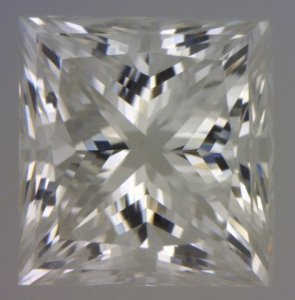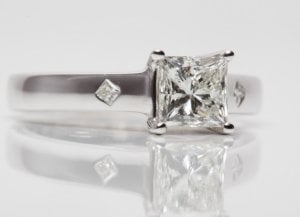And here is the stone after recutting. We lost five points and a bit of diameter, so now the stone weighs 0.96ct. Cost to the customer for the recut was $75.
My point is simple. While chips sound terrible, they can often be repaired inexpensively and with little loss to the weight of the diamond.
Hope this helps.

I have an old mine cut of about 1.88 carats. It’s got a few nicks in it (tiny) and was thinking of a light repolish but was nervous about it fracturing on the wheel or losing weigh





300x240.png)